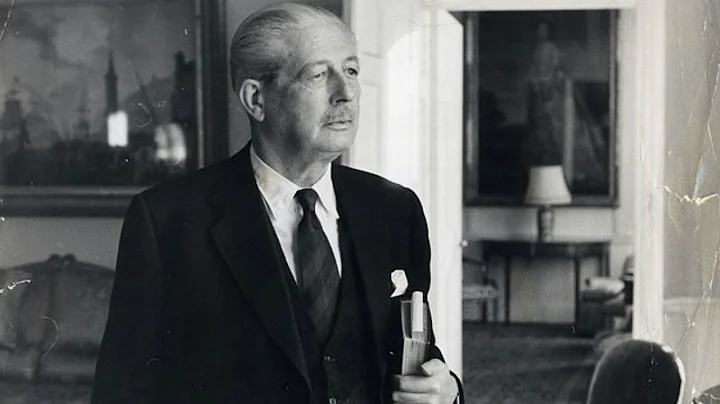Bevan E Grueneberg
age ~83
from Jackson, WI
- Also known as:
-
- Bevan Diane Grueneberg
- Bevan Deborah Grueneberg
- Bevan D Grueneberg
- Diane E Grueneberg
- Bevan E Gruenberg
- Beuan E Grueneberg
- Bevan R
- Beva Grueneberg
- Bev Grueneberg
- Bryan Grueneberg
- Phone and address:
-
N161W18871 Jakes Trl, Jackson, WI 53037
2624238122
Bevan Grueneberg Phones & Addresses
- N161W18871 Jakes Trl, Jackson, WI 53037 • 2624238122
- Wild Rose, WI
- 3234 Elm St, Cedarburg, WI 53012 • 2623777593
- 3249 Elm St, Cedarburg, WI 53012 • 2623759802 • 2623777593
- Elk Grove Village, IL
Work
-
Company:Cgs premier
-
Position:Project manager
Industries
Marketing And Advertising
Resumes

Project Manager
view sourceLocation:
3249 Elm Rd, Cedarburg, WI 53012
Industry:
Marketing And Advertising
Work:
Cgs Premier
Project Manager
Project Manager
Us Patents
-
Adjustable Shelf Unit
view source -
US Patent:6378710, Apr 30, 2002
-
Filed:Jun 13, 2000
-
Appl. No.:09/592332
-
Inventors:Bevan E. Grueneberg - Cedarburg WI
-
Assignee:Menasha Corporation - Neenah WI
-
International Classification:A47F 314
-
US Classification:2111321, 211 72
-
Abstract:An adjustable shelving unit has a shelf support to which can be mounted one or more shelves. The shelf support has a slotted back panel and edge walls with laterally aligned notches. The shelf support fits through an opening between the bottom and a back cross-member of each shelf. Each shelf bottom has transverse openings in its back corners to accommodate the shelf support edge walls so that the shelf bottom engages the notches in the shelf support edge walls. The shelves are secured to the shelf support by engagement with the notches as well as by one or more tabs at the bottom of the shelf which fit into slots in the shelf support. The notches have upwardly canted upper surfaces allowing each shelf to be pulled outward and rotated upward to disengage the shelf from the shelf support so that it may then be removed or positioned to a different height. The shelves and shelf support are constructed by folding separate corrugated paperboard blanks.
-
Collapsible Box
view source -
US Patent:6427906, Aug 6, 2002
-
Filed:Feb 21, 2001
-
Appl. No.:09/789988
-
Inventors:Bevan E. Grueneberg - Cedarburg WI
-
Assignee:Menasha Corporation - Neenah WI
-
International Classification:B65D 536
-
US Classification:22911706, 22911724, 22912038
-
Abstract:A box made from sheet materials such as corrugated cardboard has two sides, two ends connected to the sides at foldable corners and each with a central fold line and a bottom connected to the sides at foldable corners but not connected to the ends. A center partition running from one end of the box to the other is hingedly connected to the ends and is not connected to the bottom. The bottom has a central fold, enabling it to fold away from the partition when the ends are folded about the side corners in the same direction, the ends folding in the middle relative to the partition, to collapse the box. The partition is made from two panels which are attached back-to-back to one another and each panel has end flaps at each end which make up the ends of the box.
-
Shelf Extender Display Unit
view source -
US Patent:6557711, May 6, 2003
-
Filed:Mar 28, 2002
-
Appl. No.:10/112397
-
Inventors:Bevan E. Grueneberg - Cedarburg WI
-
Assignee:Menasha Corporation - Neenah WI
-
International Classification:A47G 29087
-
US Classification:211119003, 211 9001, 211 9002, 211 8601, 211134, 211 8801
-
Abstract:A shelf attachment display unit includes a tray, a hanger bracket and a placard each made from a blank of corrugated cardboard. The tray blank is folded to form front, back, bottom and end walls and the back wall has a pair of vertical slots therein. The hanger bracket is folded to form a brace extending laterally behind the back wall and having arms at its ends. The arms define channels opening in the direction of the brace and tabs extending away from the brace having upwardly opening notches for engagement with the slots in the back wall of the tray. The channels are sized to receive an edge of a shelf member and the brace is positioned to contact an underside of the shelf member when the shelf member is in the channels so as to cantilever the shelf display unit to the shelf.
-
Collapsible Shelf Unit
view source -
US Patent:6612669, Sep 2, 2003
-
Filed:Dec 13, 2001
-
Appl. No.:10/020377
-
Inventors:Bevan E. Grueneberg - Cedarburg WI
-
Assignee:Menasha Corporation - Neenah WI
-
International Classification:A47B 300
-
US Classification:312259, 211149, 108165
-
Abstract:A collapsible shelf unit has a three-sided frame made of a single sheet of foldable material and separate shelves which are hinged to the sides and rear of the frame so that the shelf unit can be collapsed to a substantially flat state by folding the shelves up against the rear of the back and folding the sides inward.
-
Collapsible Shelf Unit
view source -
US Patent:7007615, Mar 7, 2006
-
Filed:Jul 21, 2003
-
Appl. No.:10/623752
-
Inventors:Bevan E. Grueneberg - Cedarburg WI, US
-
Assignee:Menasha Corporation - Neenah WI
-
International Classification:A47B 43/02
-
US Classification:108165, 211149, 312259
-
Abstract:A collapsible shelf unit has a three-sided frame made of a single sheet of foldable material and separate shelves which are hinged to the sides and rear of the frame so that the shelf unit can be collapsed to a substantially flat state by folding the shelves up against the rear of the back and folding the sides inward.
-
Card Rack Display Carton
view source -
US Patent:20060213851, Sep 28, 2006
-
Filed:Mar 21, 2006
-
Appl. No.:11/277084
-
Inventors:Bevan Grueneberg - Cedarburg WI, US
-
International Classification:A47F 3/14
-
US Classification:211128100, 211126160, 211072000, 211094010
-
Abstract:A display carton is supported by a greeting card rack by adapters that fit into tiers of the card rack and have flaps that are secured to the carton.
-
Battery Container
view source -
US Patent:43231560, Apr 6, 1982
-
Filed:Jun 15, 1981
-
Appl. No.:6/273542
-
Inventors:Bevan E. Grueneberg - Cedarburg WI
-
Assignee:Pioneer Container Corp. - Cedarburg WI
-
International Classification:B65D 7302
B65D 8568 -
US Classification:206333
-
Abstract:An open-bottomed storage battery container, made of paperboard material, for protecting components such as the terminals projecting from the top of the battery case from being pressed when batteries in the containers are stacked. The container has four walls and a flap extending from a horizontal score line on each wall. Two opposed flaps have multiple angular score lines to enable folding them into tapered beams that rest on the top of the battery case. The other two opposed flaps serve as container covers. Said other flaps each have an angular score line defining cover and tongue sections. The tongue sections interface at an angle when the covers are closed and their ends rest on top of the battery case to provide support in addition to that provided by the beams.
Vehicle Records
-
Bevan Grueneberg
view source -
Address:3234 Elm Rd, Cedarburg, WI 53012
-
VIN:4M2EN4HE5AUJ05359
-
Make:MERCURY
-
Model:MOUNTAINEER
-
Year:2010
Name / Title
Company / Classification
Phones & Addresses
Principal
Cabinet Craft Inc
Ret Hobbies/Toys/Games · Furniture Sales
Ret Hobbies/Toys/Games · Furniture Sales
3249 Elm Rd, Cedarburg, WI 53012
2623759802
2623759802
Youtube
Get Report for Bevan E Grueneberg from Jackson, WI, age ~83





